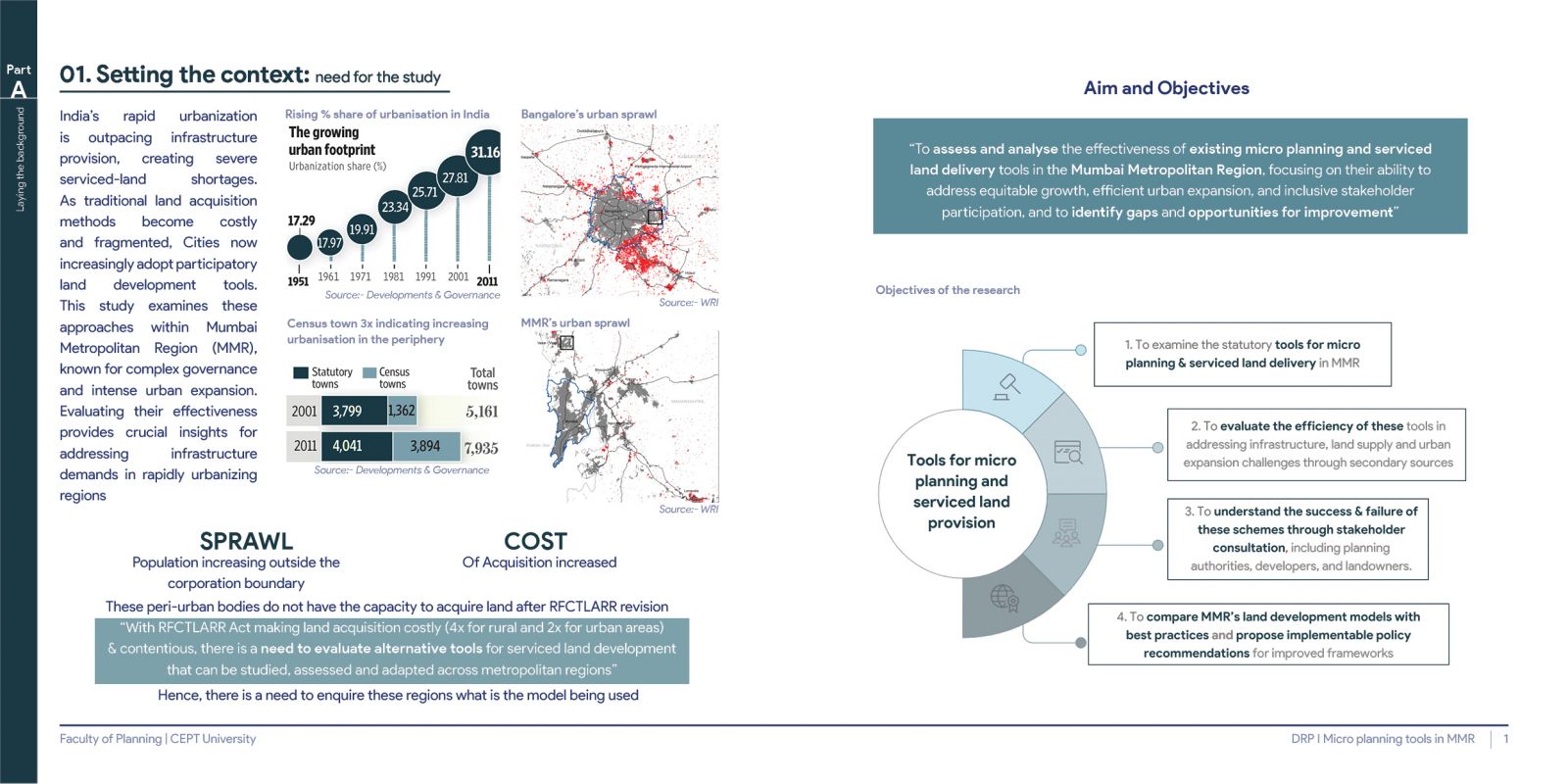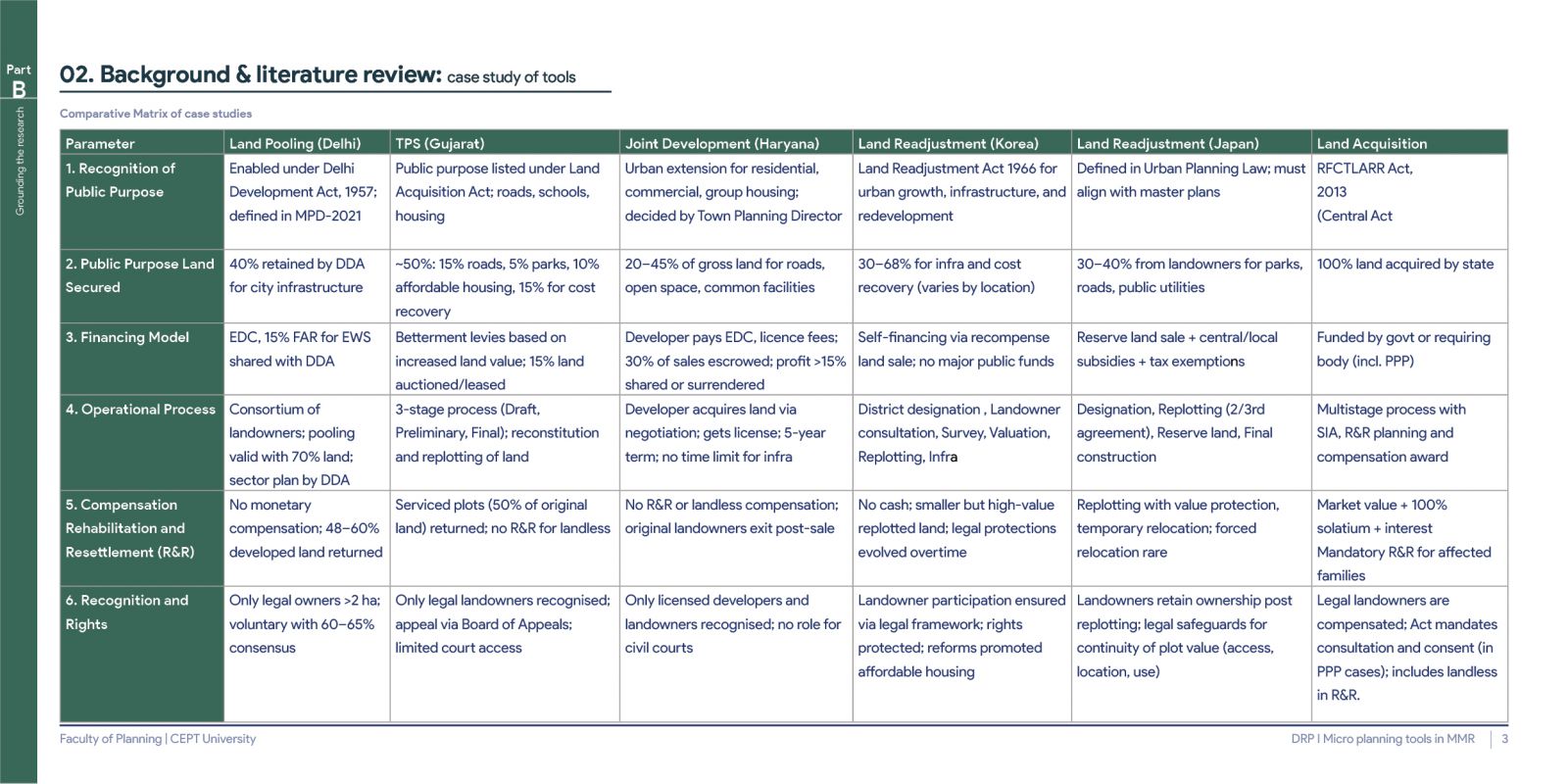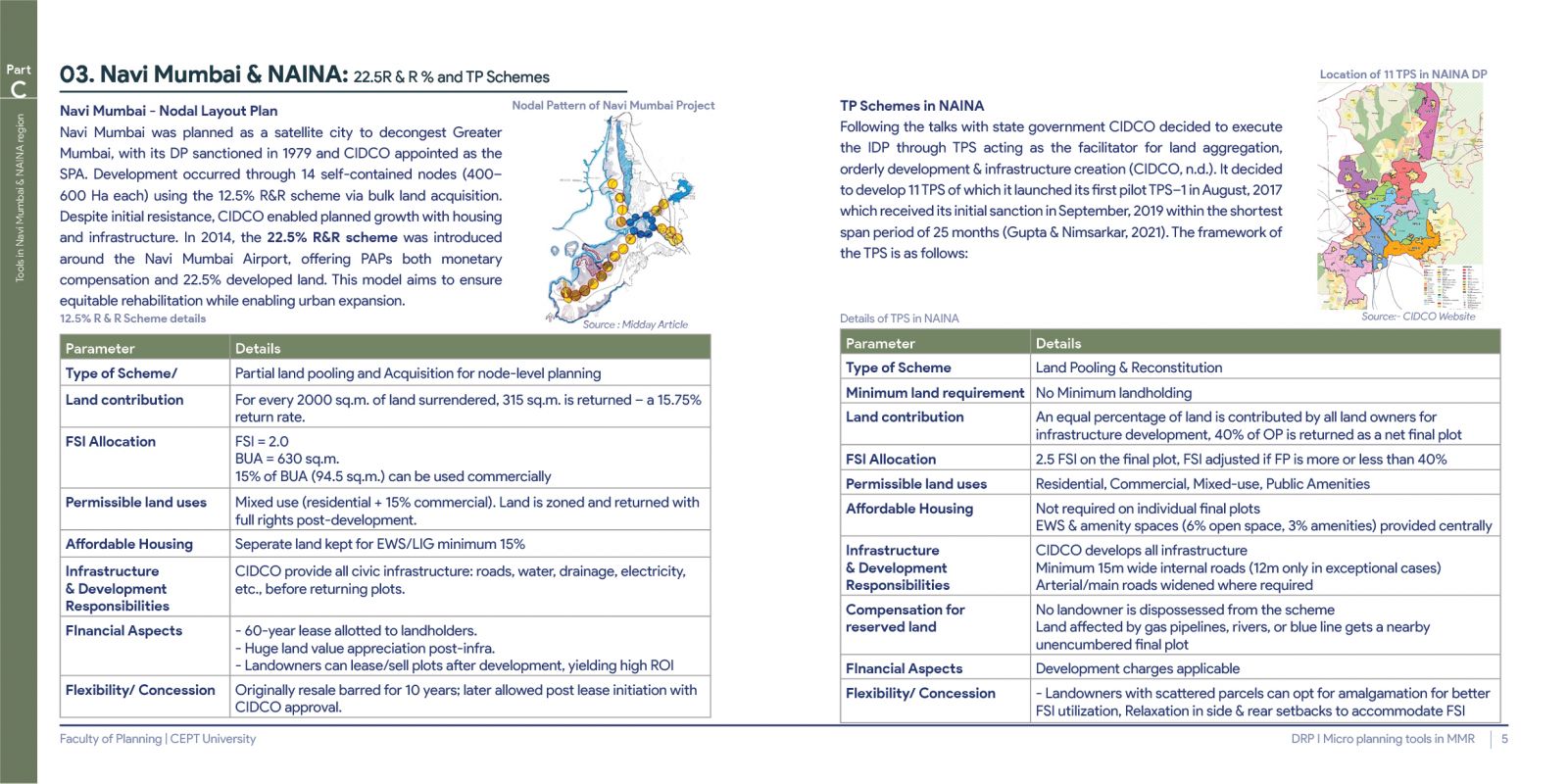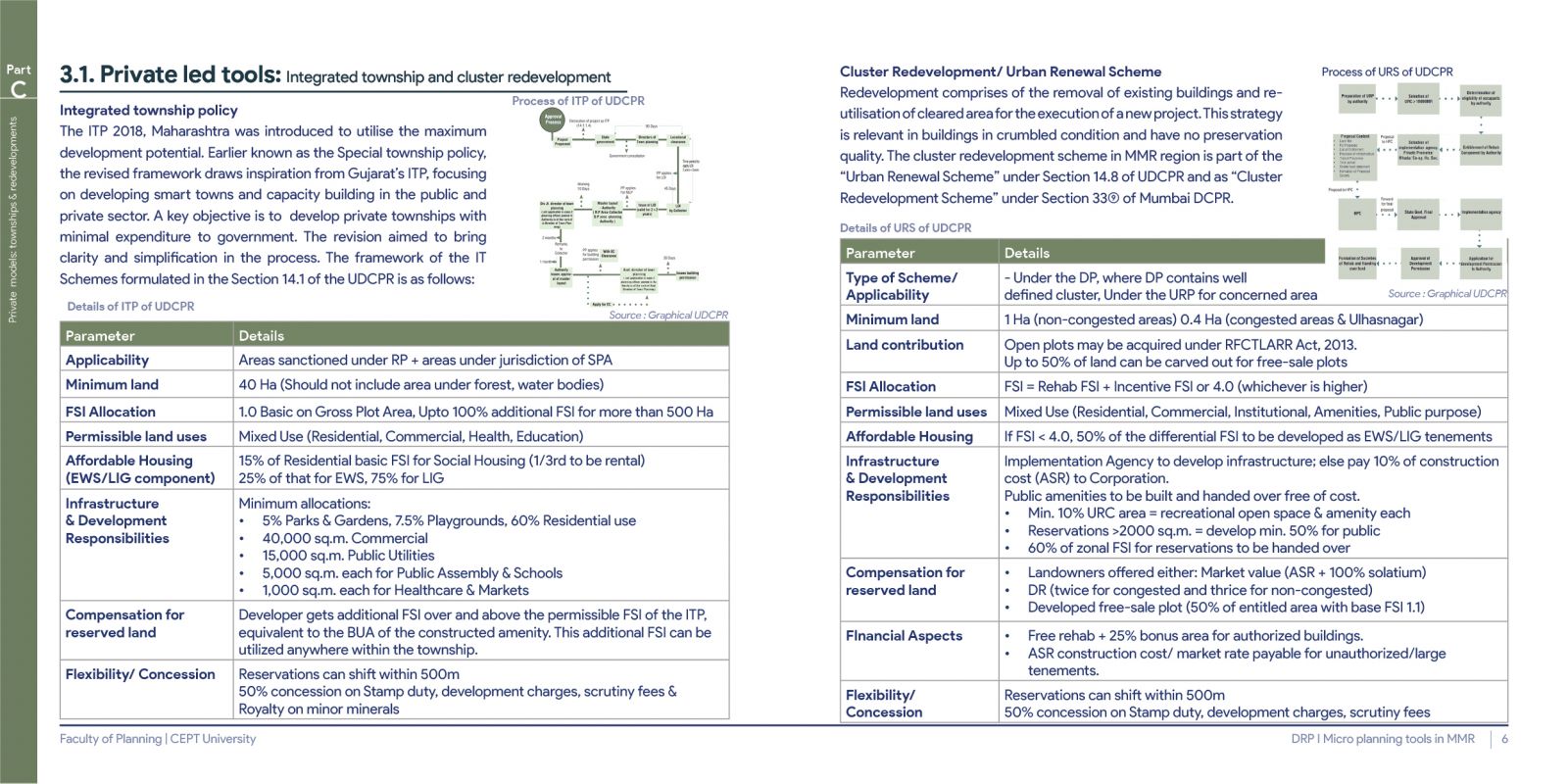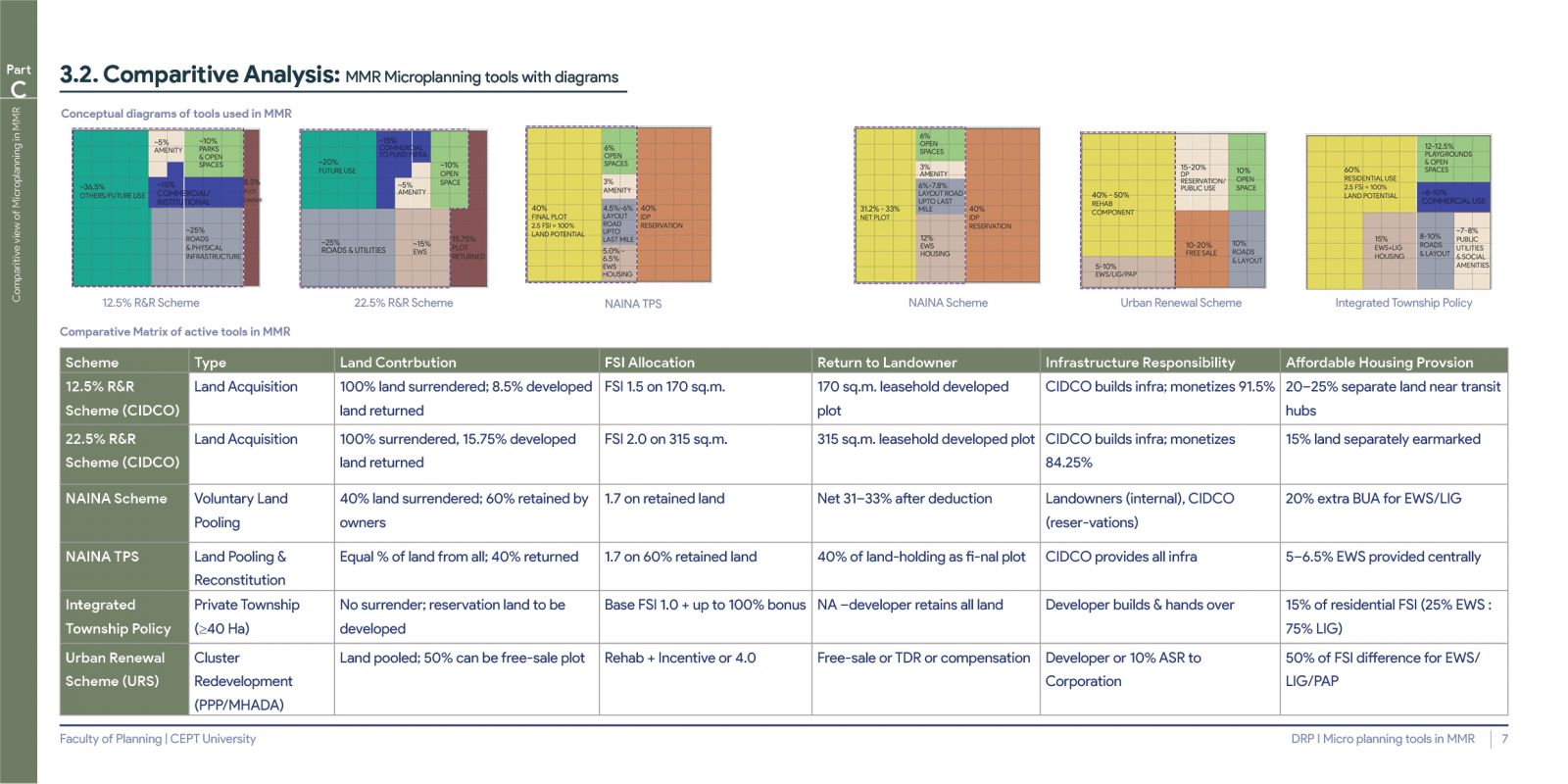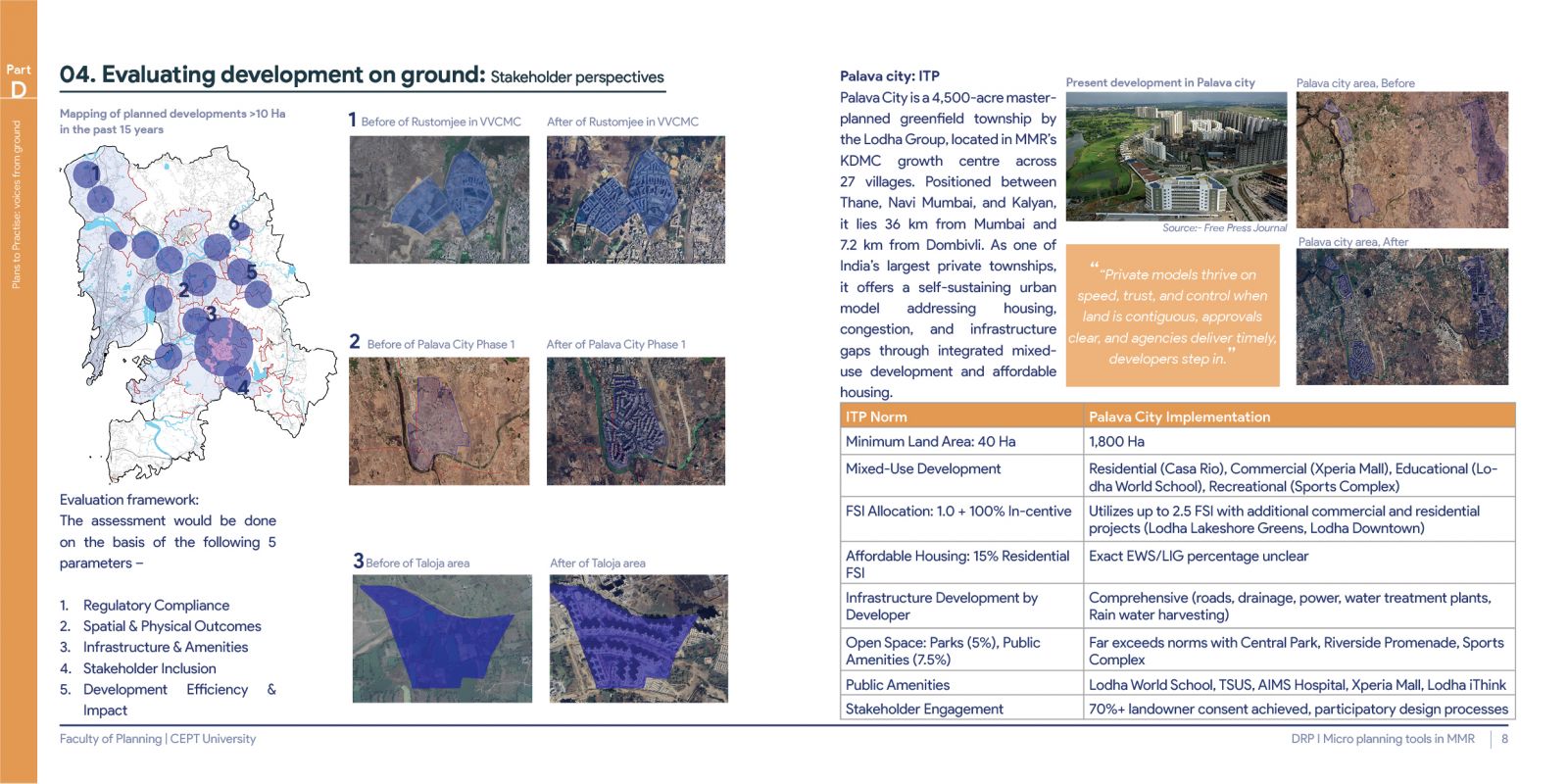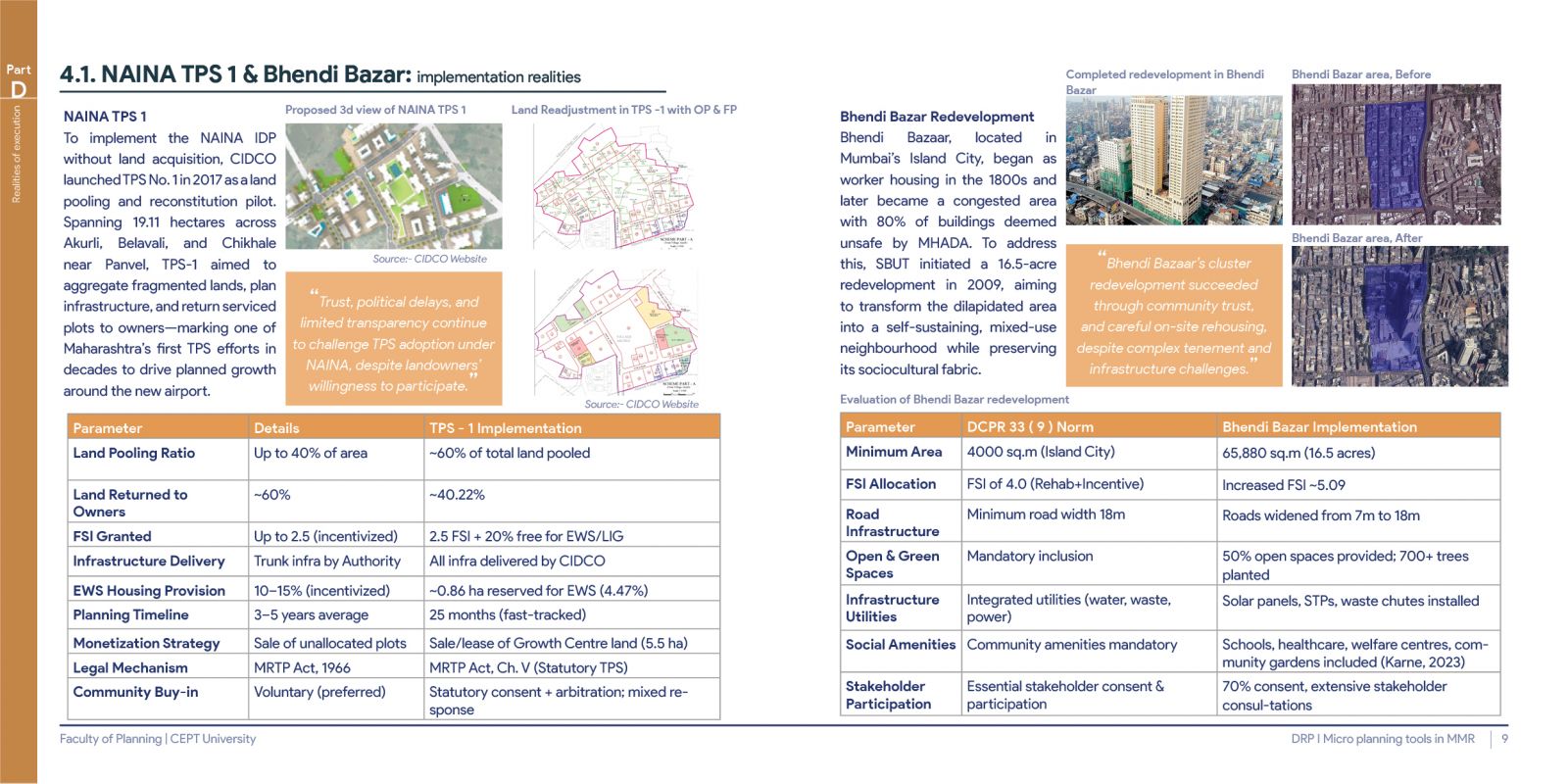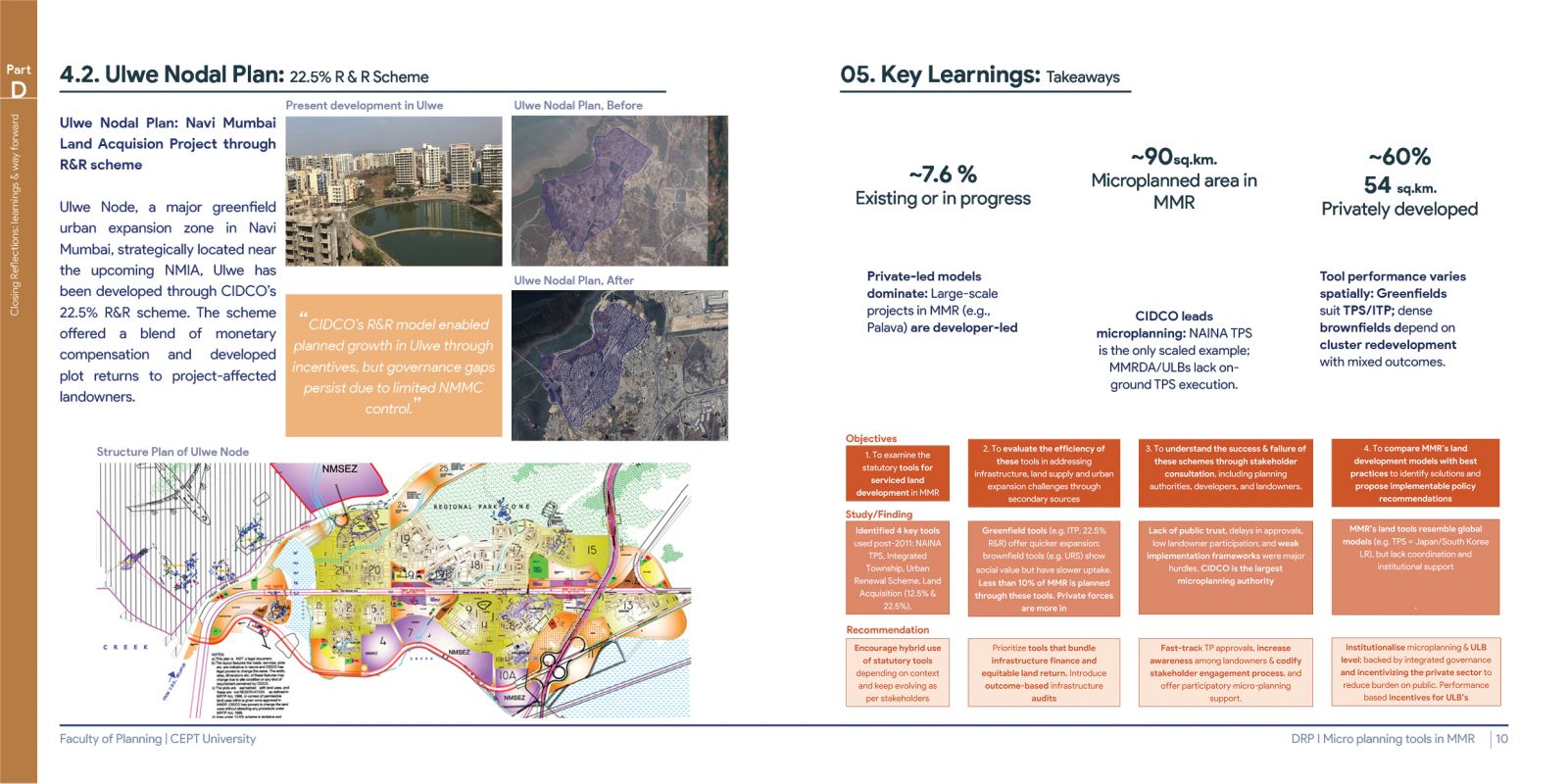Your browser is out-of-date!
For a richer surfing experience on our website, please update your browser. Update my browser now!
For a richer surfing experience on our website, please update your browser. Update my browser now!
The Mumbai Metropolitan Region (MMR) is one of India’s fastest-growing urban regions, marked by complex land ownership patterns, rapid population growth, and escalating demand for planned and serviced urban land. This Directed Research Project investigates the performance of various microplanning tools deployed in MMR to facilitate infrastructure-ready land delivery an essential component of inclusive and sustainable urbanization. The study examines four key land development mechanisms: Town Planning Schemes (TPS), Integrated Township Policy (ITP), Cluster Redevelopment Scheme (CRS), and CIDCO’s Rehabilitation & Resettlement (R&R) model. Using a comparative, framework-based methodology, it evaluates each tool across parameters of regulatory compliance, spatial outcomes, infrastructure provision, stakeholder participation, and development efficiency. Grounded case studies—NAINA TPS-1 in Panvel, Palava City township in KDMC-MMRDA SPA, Bhendi Bazaar cluster redevelopment in Mumbai city, and Ulwe Node’s R&R scheme under CIDCO—offer insights into how each model translates from policy to on-ground outcomes. Stakeholder consultations with planning authorities (CIDCO, MMRDA, ULB officials), private developers, land aggregators, and affected landowners further validate these assessments. Findings reveal that while authority-led tools like TPS have demonstrated efficiency in pilot contexts (e.g., NAINA TPS-1), the region has largely seen greater scale and capital investment in private developer-led models such as ITP projects. Less than 10% of the MMR’s total area has been covered through statutory microplanning tools, highlighting implementation challenges and institutional limitations. The study concludes that although multiple land servicing tools exist, their effectiveness is shaped by spatial context, stakeholder alignment, and infrastructure readiness. CIDCO remains the primary agency implementing TPS, but other authorities like MMRDA and local ULBs must be institutionally empowered to adopt similar tools. Key recommendations include scaling TPS beyond pilot areas, establishing a unified serviced land framework, integrating stakeholder-friendly digital platforms, and adopting regionally coordinated planning strategies to meet MMR’s urbanization demands. This research contributes to the evolving discourse on serviced land delivery in peri-urban India and provides replicable insights for urban regions across the Global South.
